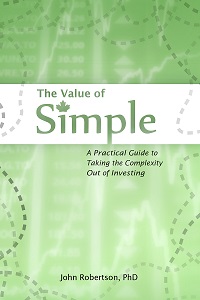I’m sure you’ve all heard it before me (since people have been telling me about it while I haven’t been watching/reading the news myself lately): a Prius in California went out of control, and the police had to issue instructions over the loudspeaker to the driver, who then managed to safely stop the car.
I (and many other Prius owners) are anxiously awaiting the full report to try to find out what really went on. I don’t want to prematurely pass judgement one way or the other (on the car or on the driver) while the facts are so thin (and a media in full-hyperbolic frenzy is not usually reliable when it comes to small details).
The biggest questions in my mind immediately were:
1. Why did he not turn the car off?
2. Why did he not put the car in neutral?
Indeed, these are two of the steps that have been widely publicized as ways to stop an out-of-control car as the Toyota recall mess has progressed. An accelerator could become stuck in any car, not just a Toyota, and drivers should know how to manage that situation! It’s possible that he had a rare problem crop up, but poor crisis management lead to it becoming national news.
Now, if he did try these basic steps, and the car didn’t obey those inputs, then we have a more serious problem on our hands. That would represent two levels of failure, and be an extreme safety concern.
Since, at the direction of the officer, he was able to shut the car down and stop, I have to initially suspect that he did not try to turn the car off or shift to neutral (or use the emergency brake?!) until after he spent several minutes on his joyride, which to me clearly indicates at least some driver-error interaction in making the whole situation worse (though a mechanical/electrical/computer problem may have initiated the cascade of failure). **And how did he stop the car eventually? By turning it off under direction of the CHP officer.
So, until a level-headed report with all these facts comes out, the take-home message: learn how to control your car in an emergency situation. CAA and Young Drivers, last I checked, offered one-off refresher lessons if you need it. Or, educate yourself: how do you turn off your car and/or shift to neutral if the throttle sticks? What happens if you do that? For most cars, there is no harm in trying, under safe conditions (i.e., no other traffic — better yet, get some friends together and rent some time on a closed track) to get up to speed, shift to neutral, and stop. Do it. Find out what happens (if anything) to your power steering and brake assist while you’re in a calm state of mind and in control of the situation. You won’t harm your car*. At the very least, look it up so you know academically.
* – probably. I wouldn’t hurt your car. But who knows what you‘ll do. ;)
If you are in this situation and want to use the brakes, apply the brakes hard and do not try to slow gradually because you will overheat the brakes and experience brake fade. Try to stop completely in one go.
One interesting twist is that the Prius (and many other newer cars) has a push-button start, rather than a conventional key-turn. That means you can’t just turn the key to turn it off, you have to push and hold the button for a few seconds if you want to power-off the car while moving (in park, you just tap the button). Now, this is the same behaviour as nearly every personal computer/cell phone/etc. on the market today. Push and hold to power off. In an interesting bit of user-interaction ergonomics, Toyota is reportedly considering adding “rapidly tapping the button” as a method to turn off the car, since that’s what people may attempt in a crisis.
Update: Someone posted a link to the 911 call at http://10newsblogs.com/audio/prius-911call.mp3 — the 911 operator does instruct him many times to shift to neutral and how to turn the car off, and he doesn’t respond. In fact, most of the call consists of her telling him to shift to neutral, and he just swears and tells her landmarks he’s passing. Don’t know yet if he didn’t hear her, if he tried and it didn’t work… but people are starting to suspect that he’s a hoax. Now I really can’t wait for a real report on the whole thing…


 Questrade: use QPass 356624159378948
Questrade: use QPass 356624159378948 Passiv is a tool that can connect to your Questrade account and make it easier to track and rebalance your portfolio, including the ability to make one-click trades.
Passiv is a tool that can connect to your Questrade account and make it easier to track and rebalance your portfolio, including the ability to make one-click trades.